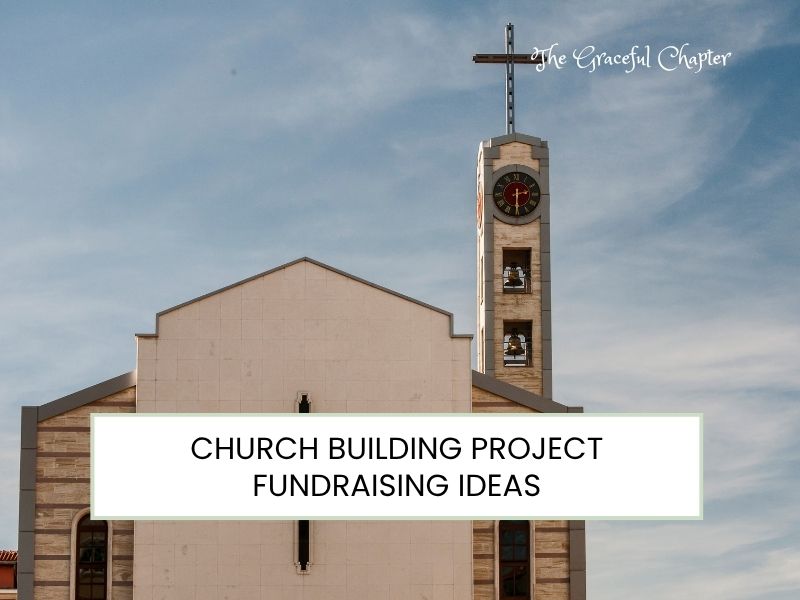Launching a church building project is a bold step of faith. Whether you’re expanding your sanctuary, renovating outdated facilities, or constructing a new worship center, one thing is certain: it takes a devoted community and a robust fundraising plan to bring that vision to life.
To help your church succeed, we’ve compiled a list of dynamic church building project fundraising ideas. Each one is thoughtfully designed to uplift your mission and engage both hearts and wallets.
Here are 10 strategies to guide your journey and energize your congregation.

1. Conduct Prospect Research
Before asking for gifts, get to know your potential donors. Prospect research allows your church to identify individuals, families, or local philanthropists who are most capable of making substantial contributions. Understanding their giving patterns, capacity, and interests allows you to personalize your outreach.
When to use it: At the outset of your campaign, before major gift solicitation.
Example: A mid-sized church uses prospect research to identify three long-time attendees with strong philanthropic records. Each one later makes a lead gift to kickstart the campaign.
Top Tip: Use a specialized tool like iwave by Kindsight that aggregates public wealth data, philanthropic history, and affinity scores. This streamlines your outreach and increases your odds of major gift success.
2. Launch a Brick or Tile Sponsorship Program
Invite congregants to sponsor engraved bricks, tiles, or pew plaques as a lasting tribute to their faith and generosity. Each donor’s name or chosen inscription becomes a literal part of the new building.
When to use it: During the campaign’s public phase, when you’re seeking broad participation.
Example: A church in Georgia raises $45,000 by selling personalized bricks for a walkway leading to their new fellowship hall.
Top Tip: Offer different tiers with increasing placement prominence. For example, pathway bricks, interior wall tiles, or sanctuary cornerstones.
3. Host a Sacred Ground Banquet
Bring your congregation together for a formal or semi-formal fundraising banquet. Include a compelling presentation, building renderings, live testimonials, and a heartfelt appeal for support.
When to use it: As a campaign milestone or kickoff event.
Example: A small church rents a local banquet hall, shares video stories of transformation, and secures $80,000 in pledges in a single night.
Top Tip: Ask a charismatic volunteer to serve as emcee and infuse the evening with spiritual encouragement in addition to financial appeals.
4. Create a “Buy a Square Foot” Campaign
Break down the total building cost into tangible square-foot sponsorships. Members can “purchase” space in the new building at a specific dollar amount per square foot.
When to use it: Anytime, especially in smaller congregations with limited major donors.
Example: A congregation in Texas funds a new multipurpose room by encouraging families to “own” 5 to 50 square feet each at $100 per square foot.
Top Tip: Use a visual tracker (like a giant blueprint on display) showing how much of the building has been funded.
5. Launch a Vision Sunday Pledge Drive
Designate a Sunday worship service entirely around the building vision. Preach on legacy, mission expansion, and faith in action. Close with a unified pledge opportunity.
When to use it: Midway through your capital campaign, when momentum needs a boost.
Example: A pastor in North Carolina leads a powerful Vision Sunday that yields over 70% of the total goal through pledge cards and digital forms.
Top Tip: Encourage 100% participation, even if someone can only give a small amount. Unity matters.
6. Set Up a Church Giving Tree
Design a physical or digital tree where each leaf represents a gift. As donations arrive, add names or symbols to fill in the tree. Watch it grow.
When to use it: As a long-term visual in the church foyer or on your website.
Example: A church installs a 5-foot mural of a tree that grows fuller with every contribution. It becomes a symbol of collective growth.
Top Tip: Highlight “blossoming” seasons; spring and fall are ideal times to promote your tree metaphor.
7. Run a 52-Week Faith Builder Challenge
Encourage every member to give a small amount each week (above their usual tithe) for one year. Frame it as an opportunity to build a legacy of faith one brick at a time.
When to use it: When sustained giving is preferred over one-time gifts.
Example: A church asks for $20 weekly for 52 weeks. Many members opt in, resulting in consistent, predictable campaign funding.
Top Tip: Provide monthly email devotionals to accompany the challenge, reinforcing spiritual motivation.
8. Offer Naming Opportunities
Allow major donors to fund key parts of the building, such as rooms, entrances, and classrooms, and name them in honor of a loved one or legacy.
When to use it: During your major gift phase.
Example: One church secures a $250,000 donation from a local business in exchange for naming the new youth wing after the founder’s late wife.
Top Tip: Avoid over-commercializing. Frame it as a tribute, not a transaction.
9. Organize a Legacy Circle for Planned Giving
Invite members to include the church building fund in their wills or estate plans. These deferred gifts can provide significant long-term support.
When to use it: Throughout the campaign, especially when engaging older members.
Example: A retired couple designates a portion of their estate to support the construction of a future education wing.
Top Tip: Host a simple estate planning workshop to educate and empower legacy-minded givers.
10. Inspire Through Monthly Testimonies
Each month, spotlight a member or family who shares why they are giving to the project. Use Sunday services, newsletters, or social media.
When to use it: Throughout the entire campaign.
Example: A young couple shares how the church’s nursery blesses their family and why they contribute to the expansion. Their story moves others to join in.
Top Tip: Keep the tone personal, not promotional. Let stories speak for themselves.
Why Church Building Fundraising Matters
Raising funds for a new church facility is about building a sacred space that fosters discipleship, community, and service.
When congregants see how their giving fuels a larger vision, they’re more likely to give generously and joyfully. Engaged donors become lifelong stewards of your mission.
Tips for Effective Church Fundraising
Follow these tips for a positive fundraising journey:
- Pray first. Plan second. Spiritual discernment must precede strategy.
- Diversify your approach. Use events, pledges, major gifts, and recurring giving.
- Tell stories often. Stories illuminate vision more than blueprints ever could.
- Celebrate milestones. Mark every win (even small ones) with gratitude.
- Communicate transparently. Regular updates build trust and credibility.
Frequently Asked Questions
How long should a church building fundraising campaign last?
Most campaigns last 12 to 36 months, depending on the goal and community size.
What if our congregation is small?
Smaller churches can still succeed with creative, community-focused strategies and persistent faith.
Can we use digital giving platforms?
Absolutely. Many churches use platforms like Tithe.ly, Pushpay, or Givelify for campaign giving.
Should we hire a consultant?
A consultant provides valuable expertise, which is especially important if your fundraising team is inexperienced. According to Church Fundraising Materials, 74% of churches meet or exceed their fundraising goals with a well-executed capital campaign.
Build Community and Faith One Brick at a Time
Building a church is a bold and transformative endeavor. With vision, unity, and a little creative inspiration, your congregation can rise to the occasion and beyond.
Let the fundraising begin. Let the foundation be laid. And let your sanctuary of faith take shape, one gift at a time.

